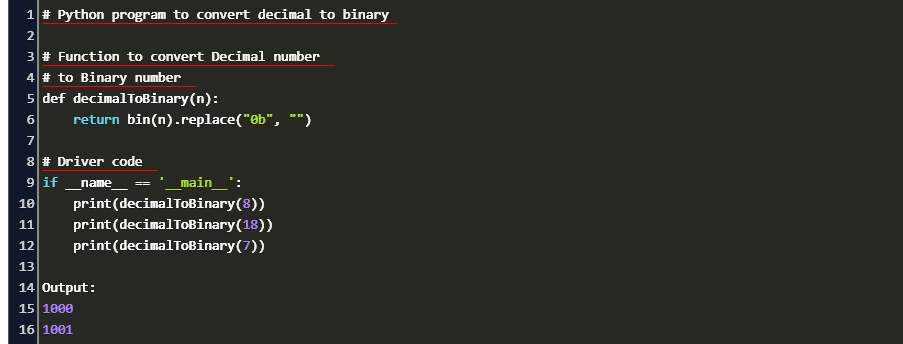

Example of Converting Binary to an Integer by using Base 0.Method Two – Converting Binary to an Integer by using Base 0.Example of Using Base 2 to Convert Binary to an Integer.Method One – Converting Binary to an Integer by using Base 2.Converting a Binary String to an Integer using Python.Example of Converting a Hex to an Integer by using Base 0.Method Two – Using Base 0 to Convert a Hex String to an Integer.Example of Converting a Hex to an Integer by Using Base 16.Method One – Using Base 16 to Convert a Hex to Integer.Using Python to Convert a String to an Integer using the Hexadecimal System.


Example of Converting a String to an Integer using the Decimal System.Convert a String to an Integer in Python using the Decimal System.Using int() to Convert a String to an Integer in Python.The, we will show you various cases, including handling octal, hexadecimal, and binary numbers. Over the next section, we will show you how it is possible to use the “ int()” function to convert a string to an int.

Unlike converting an integer to a string in Python, there is only one function that you will find helpful. Base 10 is what the decimal system is built-upon. The int function will convert the number using “base 10” by default. The function that allows us to convert a string to an integer with Python is the “ int()” function. To change the variable type, you will need to rely on built-in functions. Python Dictionaries Access Items Change Items Add Items Remove Items Loop Dictionaries Copy Dictionaries Nested Dictionaries Dictionary Methods Dictionary Exercise Python If.Else Python While Loops Python For Loops Python Functions Python Lambda Python Arrays Python Classes/Objects Python Inheritance Python Iterators Python Scope Python Modules Python Dates Python Math Python JSON Python RegEx Python PIP Python Try.Python dynamically assigns a type to a variable upon its assignment.


 0 kommentar(er)
0 kommentar(er)
